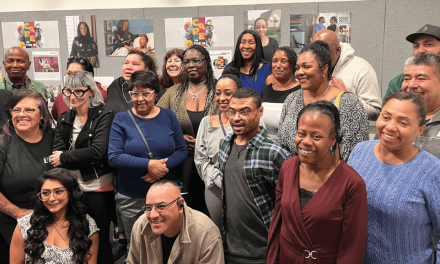By Dr. Daniel Goines
Student interest in school is declining. According to a Gallup survey, less than six in 10 middle- and high-schoolers say they’ve learned something interesting at school in the last week.
The emphasis on college preparation may be partly to blame. Two-thirds of high-schoolers say they’ve heard a lot about college, but fewer than one in five say they’ve heard a lot about jobs that don’t require a college degree.
That’s problematic because only half of Gen Z students plan to go to college. Less than 40 percent of students aged 18-24 enroll.

(Photo courtesy of Unsplash/ Ali Mkumbwa)
There’s no one roadmap for success after high school. Educators provide a disservice to students by implying that college bestows the only path toward financial independence and employment. An improved system would balance college preparation with career and technical education.
Consider the makeup of the American economy. There are 8 million construction workers in the United States, double the amount of teachers.
Construction workers generally don’t require a bachelor’s degree. However, our education system almost exclusively steers students toward attending a four-year college.
It’s important to note the role that family plays in career paths. For a student who takes care of younger siblings or grandparents and will eventually seek a job with flexible hours, a career in skilled trades may be the right fit.
The trades might also be a fit for a student who wants to stay in their rural hometown, where employment options that require a college degree are limited.
Such ambitions are just as valid as aspiring to attend an Ivy League school.
In addition to asking questions like, “What are you passionate about?” counselors can incorporate practical questions in their conversations, such as:
“Are you comfortable with taking out loans?”
“Do you have family responsibilities?”
“What jobs are available where you want to live?”
There are steps schools can take to meet the career readiness needs of all students, such as hiring counselors from diverse educational and economic backgrounds — including those with connections to blue-collar occupations.
I’ve worked to advise college students, and I know that counselors are doing their best. Unfortunately, many high school counselors have larger workloads than they can accommodate.
The average school counselor is responsible for a staggering 385 students. Nearly 20 percent of public high schools don’t have a counselor at all.
To address this, administrators can set up a career advising program for teachers to participate in, just as teachers can earn extra pay by coaching a sports team or managing a student club.
This approach can reach students who may not make an appointment with a counselor but feel comfortable discussing post-graduation plans with their favorite teacher or coach.
Even at the college level, many schools miss the mark on career readiness.
Universities will better prepare students if they emphasize how classroom learning can translate into real-world job opportunities.
For example, students at Northeastern University alternate between semesters of school and full-time work, gaining experience at everything from tech start-ups to nonprofits and marketing firms. Drexel University students can graduate with 1.5 years of full-time work experience based on their curriculum.
It’s time for educators to encourage students to think more broadly about their futures, no matter what career path they pursue.
Daniel Goines, Ed.D, is a higher education specialist at KI, a global furniture manufacturer in Green Bay, Wis. He has two decades of experience in higher education administration and education leadership.
The post Commentary: It’s not realistic for all students to attend college. Here’s what schools should do instead appeared first on AFRO American Newspapers.











